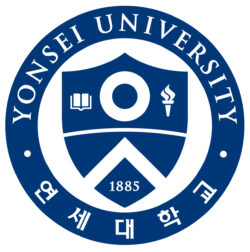
Yonsei University
.
Medias
Surface, Space and In-Between
Part of the Conference Society. Space. Screens. Dates: Dec 11-13, 2024 | Abstracts: Oct 30, 2024. USA | Brazil | South Korea
—
Call
Medias, technologies and digital phenomena of every kind are ubiquitous today. They have, and are, changing how we work, learn, design, create, interact and relax. They are also affecting how we perceive the material world around us and have created an infinitely blurred world of the virtual and the real – in both material and metaphysical terms. In reflecting on the conceptual questions related to this scenario, the Medias: Surface, Space and In-Between conference track seeks to explore three broadly defined areas of interest for scholars in the arts and design fields.
Space and Surface: A consideration of how space and surface interact across various artistic and design disciplines such as architecture, urban planning, landscape architecture, exhibition design, art practice and more. Here, both the screen and the surface blur – whether the physical surface such as the façade or canvas, or media-based surfaces such as film, TV or projection mapping.
Media Interface: An examination of how medias and technologies operate across traditionally ‘material disciplines’ such as art, design, architecture, landscape and urban planning. In these realms we have seen in recent years how social media is increasingly used by planners to facilitate user engagement, and how digital manipulation is used by artists to create ‘original’ works of art – whether digital or material. Similarly, we have seen how the field of architecture now uses CAD, BIM and parametricism to support architectural design and construction. In a similar vein, we have been witness to the revolution in industrial design that has come about with digital 3D modelling.
The ‘In-between’: A critique of how medias, screens, spaces and objects are now blurring in design processes, use patterns and presentation techniques across the arts and design sectors. This hybrid form of design, spatial experience and visualization modes has created a form of omniscient ‘in-betweenness’ connecting the real and the virtual; the centre and the edge, the frame, screen, object and experience. In short, digital technologies have created a form of liminal state in all aspects of contemporary art and design.
In exploring these ideas at the conference we seek varied disciplinary perspectives that help understand how digital-human practices and related theories are developing, expanding and blurring..
Key Words:
Space, Surface, Screen, Interface
Part of the Conference Society. Space. Screens.
This track develops themes central to the teaching ethos at Yonsei University. Yonsei University is one of Korea’s most research-intensive universities with a thriving community of innovative and world-leading researchers. The scope of significant research at Yonsei University is broad and diverse, including the fields of medicine, biochemistry, health, engineering, materials science, chemistry, and neuroscience, as well as the areas of the humanities and social sciences. Yonsei University’s 123 research centers conduct interdisciplinary, policy-relevant research and foster globally-minded, creative leaders of convergence research. research Centers include: The Green Infrastructure Technology for Climate Change; the Center for Multiphase Materials Manufacturing Innovation; the Center for Multi-dimensional Materials; the Center for Digital Social Science and the Research Institute of Future City and Society, among many more. The key partners for this conference at Yonsei University are: Hyun-Jean Lee. Media Artist, Professor at Yonsei University, Seoul, South Korea – Submit an abstract:![]()
Yonsei University, South Korea
About:
Key people:
Society. Spaces. Screens. Part of the Mediated Cities Series
Other Tracks: The Virtual Polis – Arizona State University>> | Mediating Visions – CESAR School >>
Image: Jet de la Cruz




